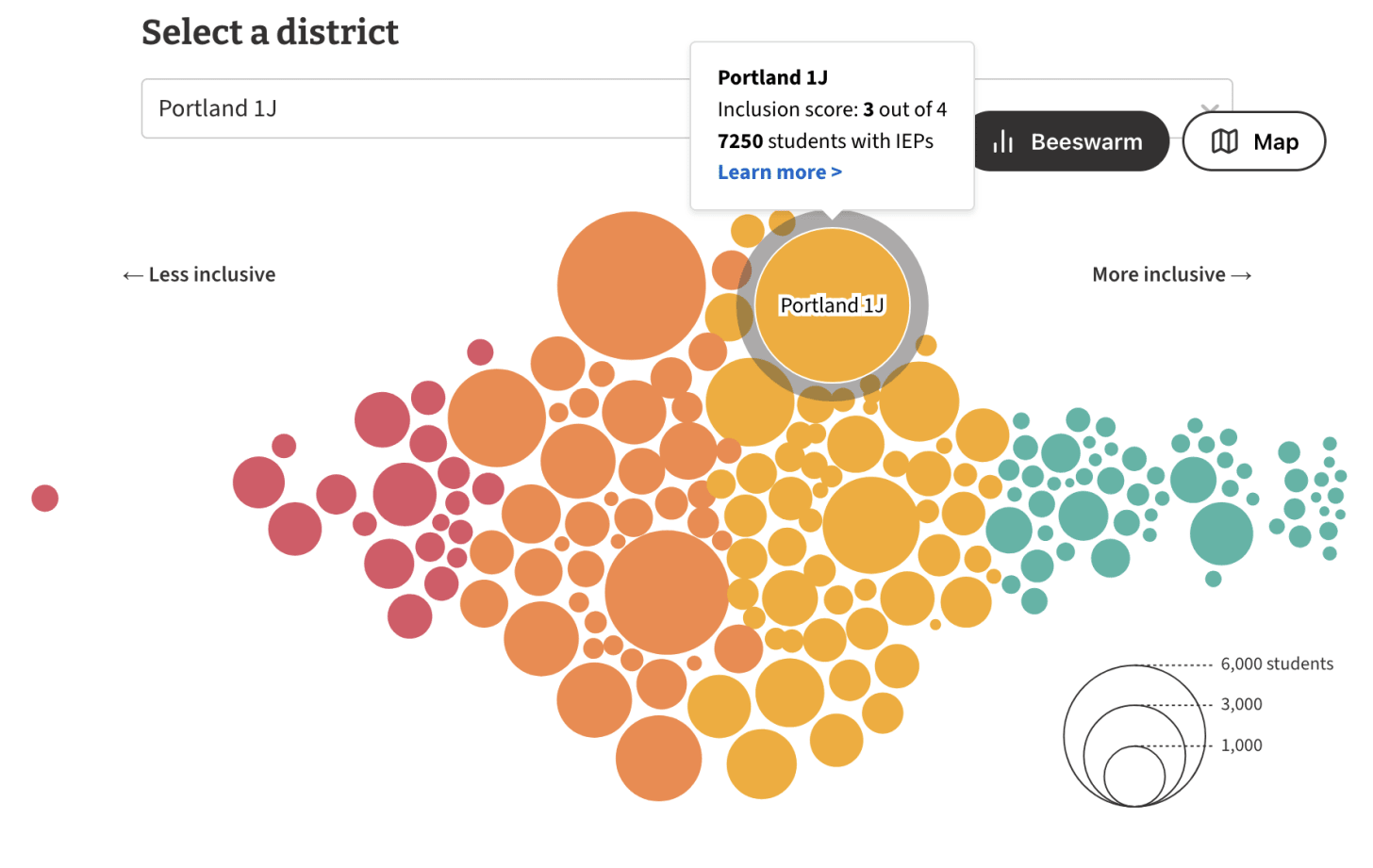Making Special Education Data Work for Families
Several summers ago, I found myself doing what many parents of children with disabilities do - calling school after school, trying to understand what support systems existed for students like my child. As I spoke with principals across Oregon and California, a troubling pattern emerged: the landscape of special education support varied dramatically from district to district, and the information was frustratingly opaque.
Why should families have to make dozens of calls just to understand what support their child might receive? Why does moving across district and state lines often mean such dramatic changes in services, even though a child's disability remains the same?
These questions led me to dig into the data. I discovered that while schools report detailed information about their special education programs to state and federal agencies, this data typically sits in complex spreadsheets and dense government websites - technically public, but practically inaccessible to most families.
That's why I created Disability + Education Data - a tool that transforms this vital but hard-to-access data into clear, interactive visualizations that help families understand:
How inclusive different districts are in their approach to special education
What percentage of students receive support in regular classrooms vs. separate settings
Graduation rates for students with IEPs
Whether there are concerning patterns in discipline or representation
This is just the beginning. In the coming months, I'll be:
Adding more detailed data about specific disability categories
Creating guides to help families interpret the numbers
Building tools to compare districts across state lines
Working with advocacy organizations to reach more families who need this information
If you're a parent, educator, or advocate interested in making special education more transparent and equitable, I invite you to follow along. Together, we can help ensure that families have the information they need to advocate effectively for their children.
Subscribe to stay updated on new features and data releases. You can find the data tools here.
[Note: This project currently covers Oregon, with plans to expand to additional states]


